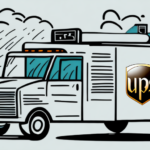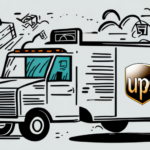Understanding UPS Delivery Times
UPS is renowned for its reliable shipping services utilized by millions globally. However, delivery times can sometimes fall short of expectations due to various factors. Grasping how UPS calculates delivery times is essential to setting accurate expectations and minimizing potential frustrations.
How UPS Calculates Delivery Times
UPS delivery times are determined by several key factors:
- Distance: The geographical gap between the origin and destination significantly influences delivery speed.
- Service Type: UPS offers a range of services such as UPS Ground, UPS Next Day Air, and UPS 2nd Day Air, each with varying delivery estimates.
- Package Specifications: The weight and dimensions of a package can affect handling and transit times.
- Time of Shipment: The time a package is dispatched during the day can impact the expected delivery date.
For instance, UPS Ground typically delivers within 1-5 business days domestically, while UPS Next Day Air guarantees next-business-day delivery.
Factors Impacting UPS Delivery Times
Several elements can disrupt the anticipated delivery schedule of UPS packages. Understanding these factors can help in mitigating delays:
Weather Conditions
Adverse weather such as snowstorms, hurricanes, or heavy rains can impede transportation routes, leading to significant delays. According to the National Centers for Environmental Information, extreme weather events increased by 20% over the past decade, directly impacting shipping schedules.
Package Volume
During peak seasons like holidays, the volume of packages surges, overwhelming the logistics network. The International Retail Federation reported a 30% increase in online shopping during Black Friday 2023, contributing to extended delivery times.
Incorrect Addresses
Misentered or incomplete addresses can cause delivery attempts to fail, necessitating returns to the sender and subsequent redelivery attempts, which prolong the overall delivery timeline.
Mechanical Issues
Breakdowns or maintenance needs for delivery vehicles or aircraft can disrupt schedules. Proactive maintenance and real-time monitoring by UPS aim to minimize such occurrences.
Impact of COVID-19 Pandemic
The COVID-19 pandemic introduced unprecedented challenges to the shipping industry. Lockdowns and health regulations led to workforce shortages and altered operational capacities. Although many restrictions have eased, residual effects continue to influence delivery efficiencies.
The Impact of COVID-19 on UPS Deliveries
The pandemic reshaped the logistics landscape, including UPS operations:
Operational Adjustments
UPS implemented safety protocols such as social distancing, enhanced sanitization, and contactless deliveries to protect employees and customers. These measures, while crucial, have occasionally slowed down processing times.
Increased Package Volume
With a surge in e-commerce, UPS experienced a significant rise in package volumes. A UPS Business Insights report highlighted a 50% increase in small package shipments in 2021 compared to pre-pandemic levels.
Technological Innovations
To adapt, UPS accelerated the adoption of technologies like automation in sorting facilities and the use of artificial intelligence for route optimization, aiming to enhance delivery efficiency despite increased demands.
What to Do If Your UPS Package is Delayed
Experiencing a delayed UPS package can be frustrating, but several steps can help address the issue:
Check Tracking Information
Visit the UPS Tracking page and enter your tracking number to get real-time updates on your package's status and location.
Contact UPS Customer Service
If tracking reveals persistent delays, reach out to UPS Customer Service for detailed information and potential resolution options.
Reach Out to the Sender
Inform the sender about the delay as they may initiate an investigation or resend the package if necessary.
Explore Compensation Options
UPS offers the Guaranteed Service Refund Program (GSR) for eligible shipments that do not meet the guaranteed delivery times. Review the program's terms and submit a claim if applicable.
UPS Shipping Options and Estimated Delivery Times
Choosing the right UPS shipping option is pivotal in ensuring timely deliveries. Below is an overview of UPS's primary shipping services:
Domestic Shipping Options
- UPS Ground: Delivery within 1-5 business days based on distance.
- UPS 3 Day Select: Guaranteed delivery within three business days.
- UPS Next Day Air: Guaranteed next-business-day delivery by end of day.
- UPS 2nd Day Air: Delivery by the end of the second business day.
International Shipping Options
- UPS Worldwide Express: Delivery in 1-3 business days, door-to-door.
- UPS Worldwide Saver: Delivery by the end of the business day in two to five business days.
- UPS Standard: Economical ground delivery to Canada and Europe.
For comprehensive details, visit UPS International Services.
Considerations When Selecting a Shipping Option
- Cost: Faster services like Next Day Air are more expensive compared to Ground services.
- Package Size and Weight: Heavier or larger packages may incur additional fees or require specialized handling.
- Delivery Guarantee: For time-sensitive shipments, opting for guaranteed services reduces the risk of delays.
- Destination: Remote or international destinations might require specific shipping options with adjusted delivery times.
How to Track Your UPS Package
Tracking your UPS package is straightforward and provides transparency throughout the shipping process:
Using the UPS Website
Navigate to the UPS Tracking page and enter your tracking number to view the current status, location, and estimated delivery date of your package.
UPS My Choice
Register for UPS My Choice to receive personalized delivery alerts, make delivery preferences, and gain better control over your package's delivery.
Mobile App
Download the UPS Mobile App for tracking on the go, push notifications, and easy access to shipping services.
Preventing Future UPS Delivery Delays
Proactive measures can significantly reduce the likelihood of future delivery delays:
Ensure Accurate Address Information
Double-check recipient addresses for accuracy, including street name, number, ZIP code, and contact information to facilitate smooth deliveries.
Choose Appropriate Shipping Options
Select shipping services that align with the urgency and nature of your shipment. For critical deliveries, opt for guaranteed services to ensure timely arrival.
Monitor Potential Disruptions
Stay informed about weather forecasts, public holidays, and other events that might impact delivery schedules. Planning ahead can help accommodate potential delays.
Utilize Technology
Leverage UPS's technological tools like route tracking and delivery notifications to stay updated and adjust plans as needed.
Comparing UPS with FedEx and USPS
UPS, FedEx, and USPS are prominent players in the shipping industry, each offering distinct advantages:
Delivery Times
While all three offer expedited services, UPS and FedEx generally provide more consistent next-day and international delivery options compared to USPS.
Service Options
- UPS: Extensive ground and air services with robust tracking capabilities.
- FedEx: Known for overnight shipping and specialized services like FedEx SameDay.
- USPS: More economical for small packages and mail, but with longer international delivery times.
Pricing
USPS often emerges as the most cost-effective for lightweight and small parcels, whereas UPS and FedEx may offer better rates for larger or more urgent shipments.
For a detailed comparison, refer to industry analyses such as the Statista Shipping Report.
Filing Complaints and Understanding Refund Programs
If you've encountered issues with UPS deliveries, understanding how to file complaints and access refund programs is crucial:
How to File a Complaint
- Visit the UPS Customer Service page.
- Choose the appropriate category for your issue.
- Provide necessary details, including tracking numbers, shipment information, and a description of the problem.
Guaranteed Service Refund Program (GSR)
The GSR offers refunds for shipments that do not meet the guaranteed delivery times of selected UPS services. Eligibility criteria include:
- Using a service eligible for GSR.
- Submitting a claim within the specified time frame.
- Ensuring the delay was within UPS's control.
For more information, visit the UPS Satisfaction Guarantee page.
Conclusion
Despite being a trusted and widely used shipping service, UPS occasionally faces delivery delays due to various factors like weather, high package volumes, and unforeseen disruptions such as the COVID-19 pandemic. By understanding how UPS calculates delivery times, being aware of potential delay factors, and utilizing available tools and services, customers can better navigate and mitigate the impact of such delays. Selecting the appropriate shipping options, ensuring accurate shipment information, and staying informed through tracking can enhance the overall shipping experience with UPS.






















